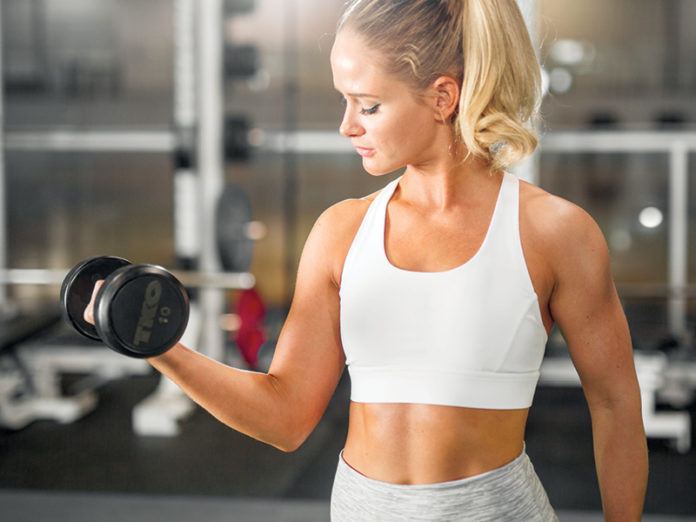
If you’re that cardio bunny trying to run your way to a hot toned bod, you’re wasting your time. You simply can’t achieve the look you want without incorporating weights. Consider the appearance of a marathon runner next to a bodybuilder. Somewhere in the middle would be perfect, right?
To achieve a toned appearance, your fitness routine should include weights and cardio along with a balanced diet. Doing cardio alone creates what we refer to as “skinny fat” — someone who appears to be a healthy weight, but has little muscle definition.
Strength training is one of the most effective ways to lose weight, burning calories up to 48 hours post exercise. Muscle tissues break down during heavy lifts then rebuild into stronger, denser tissue. That recovery requires a lot of energy that can be drawn from burning fat. Strength training helps correct issues related to obesity, diabetes, high blood pressure, cholesterol and prevention of osteoporosis. Some ladies fear injuring themselves from heavy lifts. Here’s the thing, studies on post-menopausal women show that strength training preserves bone density while improving muscle mass, strength and balance.
Some women are under the impression that if they train like a man they will look like one. However, women’s bodies have a balance of hormones that combats this type of bulky muscle development. It’s why men and women can train exactly the same way and have a different outcome. So go ahead, get in that weight room and lift some heavy iron, it’s quite empowering!
Here are a couple of compound movements that you can try in the gym on your own or with a partner. A compound movement is any movement that uses multiple muscle groups, such as a squat.
These are movements that you want to focus most of your training on because they will create bigger change and burn more calories. Isolated exercises such as a bicep curl are great for fine tuning, but compound movements are best for body composition and weight loss. Don’t fear the iron challenge!
Warm-Up
Begin with 5-10 minutes of cardio on the treadmill. Include 1 warm-up set at the beginning of each exercise by using no weight.
The Workout
Beginner Bench Press – 7-15 lbs. Dumbbells
Pick up two light/medium weight dumbbells. Lay flat on a bench with feet on either side. Arch the low back, drive the shoulder blades down with your butt, shoulders and head touching the bench. Bring arms out to 90 degrees, thumbs facing each other, press the dumbbells straight up then lower slow and controlled. 10 repetitions, 4 sets.
Many women neglect this exercise not realizing that imbalanced muscle development can cause a string of issues with back pain, alignment and posture. When done properly, this exercise targets the entire upper body.

Overhead Press – 7-10 lbs. Dumbbells
Feet shoulder-width apart and knees slightly bent.
Hold a pair of dumbbells just outside your shoulders, arms bent, palms facing each other. Press both dumbbells up until the weights are overhead and your arms are straight. Pause, then lower the dumbbells under control back to the starting position. 10 repetitions, 4 sets.

Beginner Box Squats – 10-20 lbs. Dumbbells
Place box behind you, lower than standard chair level. Place feet slightly more than shoulder distance apart, toes pointed slightly out, dumbbells in hand on either side. Keep knees over ankles, back straight and slowly lower yourself while pushing out hard with the knees. Hover over the box for 1 second and explode up pushing through the heels. 10 repetitions, 4 sets.

Cool Down
Stretch each muscle group that you have worked. This will help flush out any built up lactic acid, assisting in recovery. It’s important to consume 20-30 grams of protein within 1 hour post exercise. This will help replace proteins broken down in muscle tissue to assist in recovery.
















